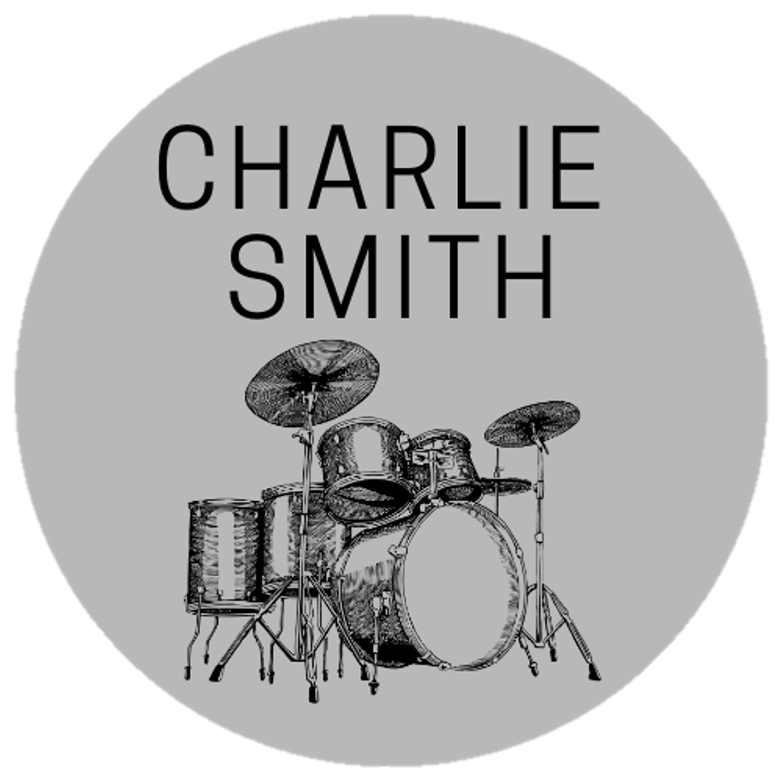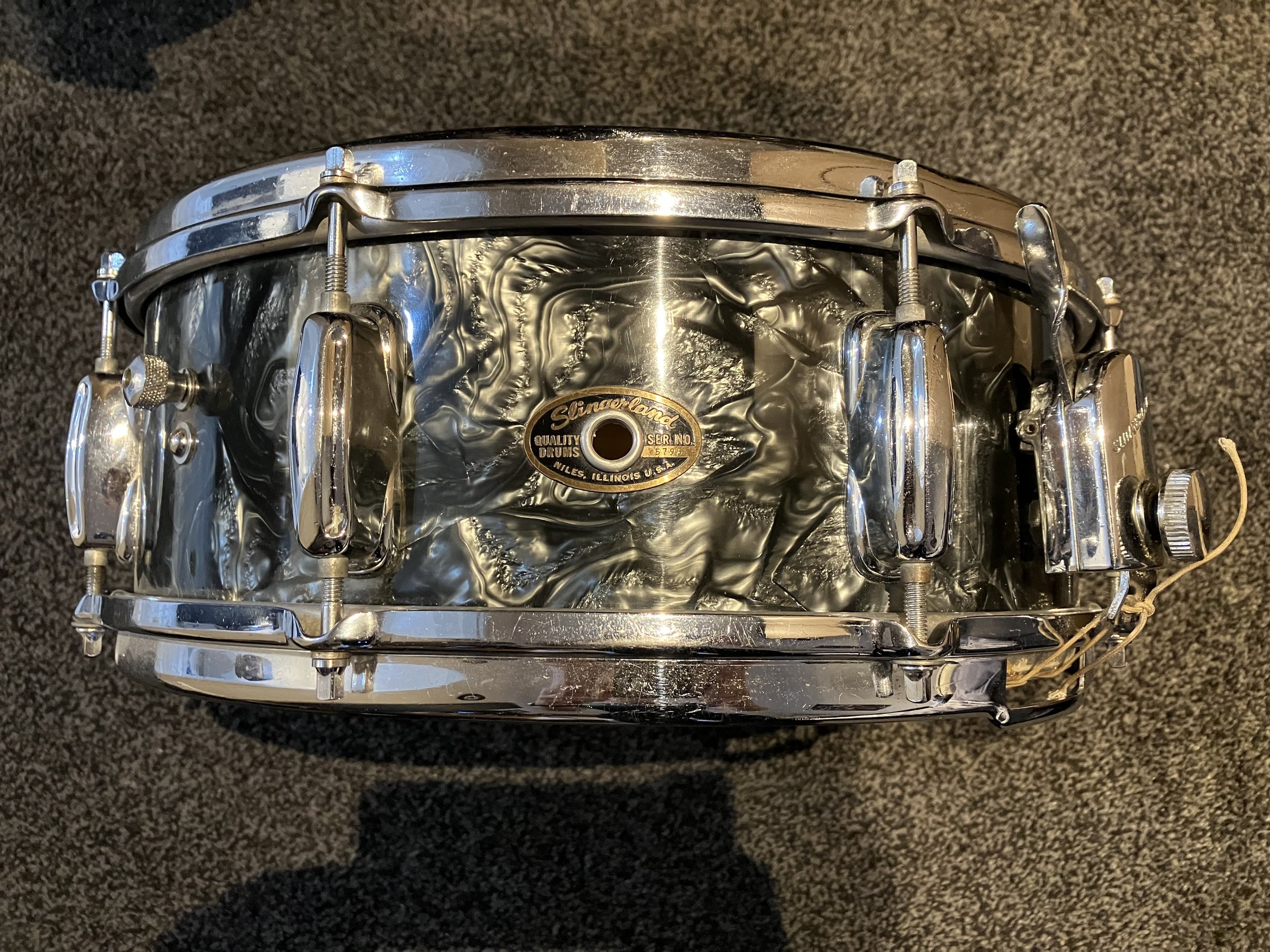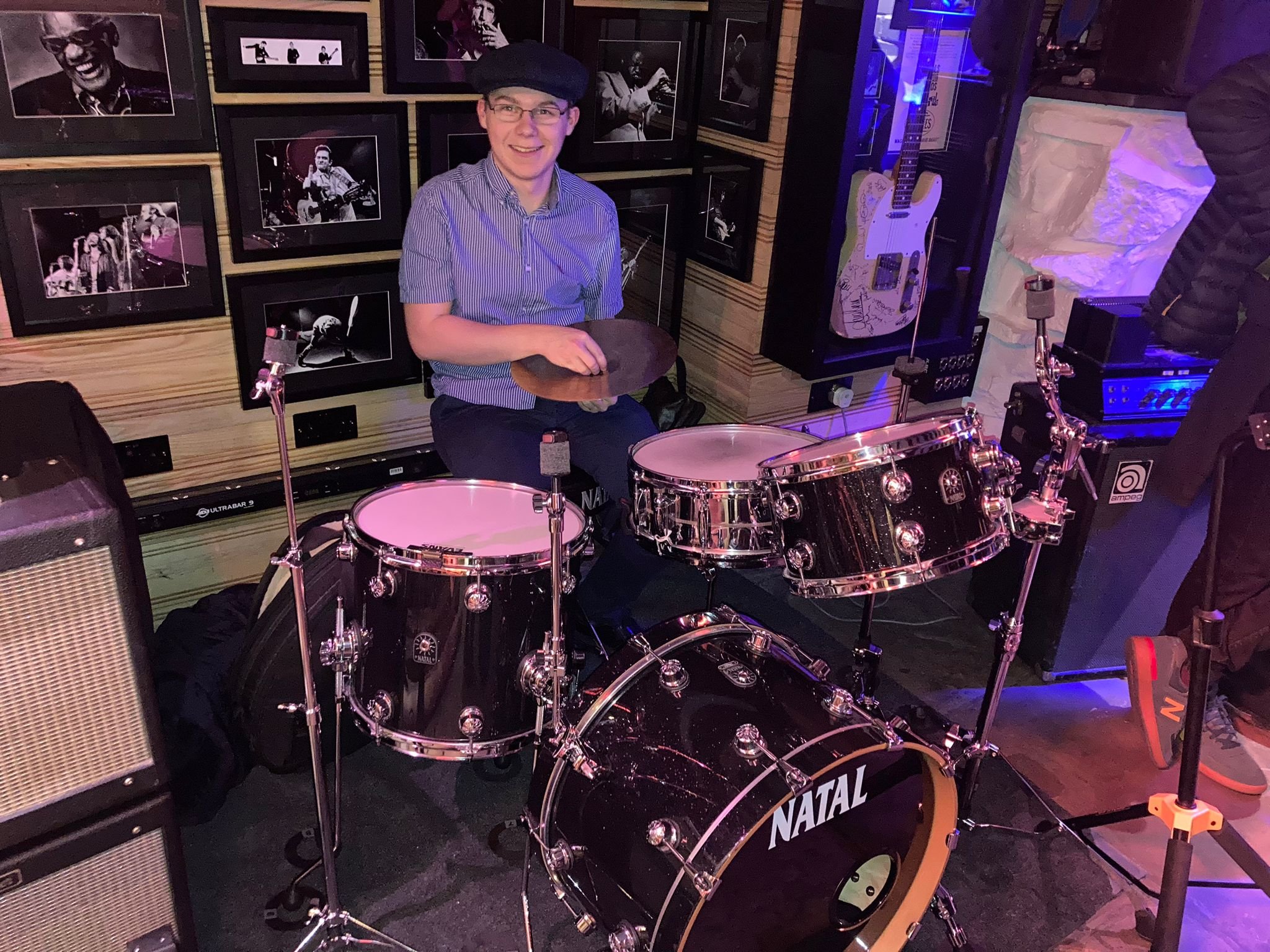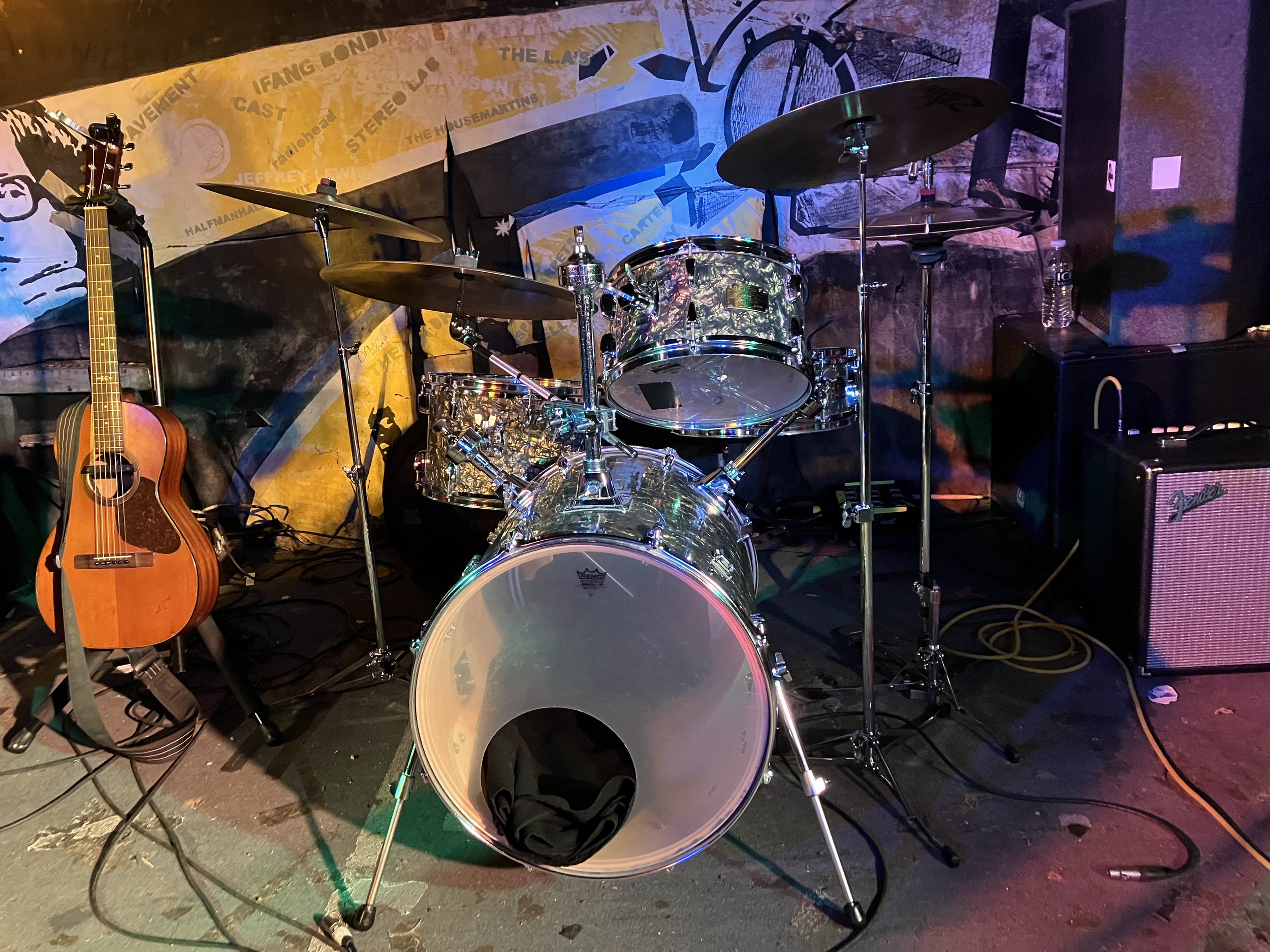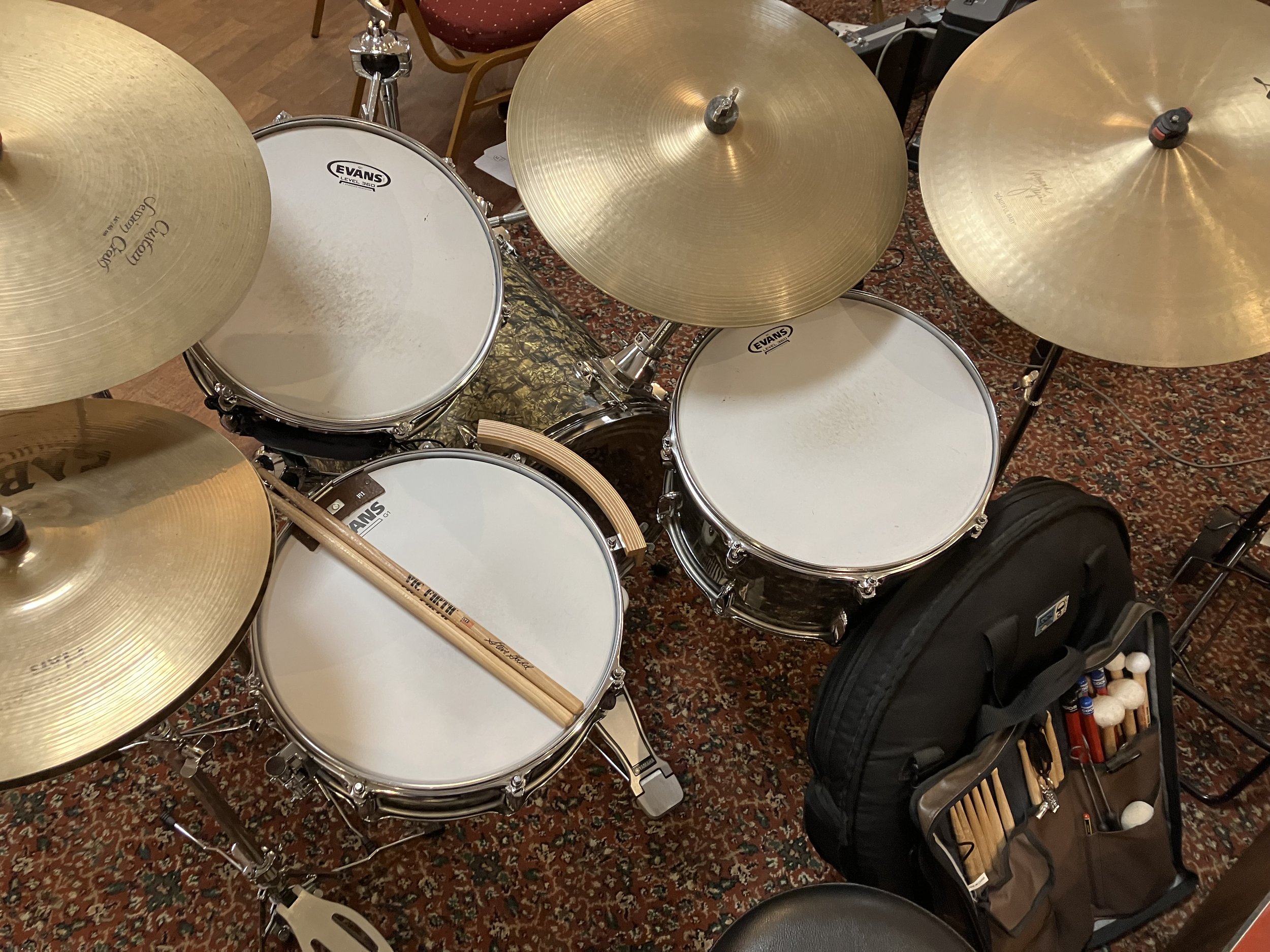The Accidental Collector?
Here’s a subject i’ve pondered for a little while lately, as over the last few years it must be said i’ve accrued quite the amount of equipment, new stuff, vintage treasures, oddities and everything in between. Now i’d never have called myself a collector, I tend to invest in gear to use it (with one or 2 exceptions aside). But it’s crept up on me a little that i’ve undeniably ended up with a collection. I’ll warn you in advance this is a long and meandering post on a drummers musings over his gear and some favourite recent additions.
This is a subject we’ve long discussed in my circle of equally gear obsessed drummer pals (namely those from Dave Bateman’s Lockdown hangs), most of which have collections that makes mine look no more than a bookcase - but we do all question if we’re crazy, and maybe we are! My rule to myself is to try to minimise having things that are too similar (particularly when it comes to snares) and to try and keep a diverse selection that covers all grounds possible. A trait I notice in myself with snares (which i’m trying to get out of!) is finding a sound in something and just keeping it there for fear of losing the tone or particular quality it has, thus meaning I don’t explore the full potential of a given drum, but the reasoning behind that mindset goes a bit deeper, into the realm of having the sound there at the drop of a hat, to be able to pick up a snare out of a case and have exactly what i’m imagining it to sound like right on the stand with no tweaking. But a combination of times when this is not possible (look no further than calf/natural drumheads) and also diving deep into tuning drums lately and playing with sounds between tunes on a gig (something I heard Neal Wilkinson talking about doing on the James Morrison gig). The other thing i’ve noticed is my trouble with letting go of things, not in a hoarding kind of way, at least not the way I see it! Its just the thought of liking certain things because of the sound, or rarity in some cases and knowing that if you decide to move them on, and come to want them back, it’ll be a task to get that exact sound, especially when you’re looking at the vintage side of things, and rare configurations that won’t come up often. When it comes to cymbals particularly, they’re so individual and no two will sound exactly alike, even being similar ages, models and weights, so they’re something I tend to hang on to whenever I find one that sounds great to my ears.
I suppose it’d be good to talk a little about where my tastes lie when it comes to gear, because like anything, you’ll prefer one variety or era over another and the like. Personally as vintage drums and cymbals go its all about the 70’s or earlier for me, anything into the 80’s tends to head into the realm of deep power toms and cannon like bass drums which make my back twinge just thinking about them, not to mention someone of my stature sat behind them would hardly be able to be seen! So for me any vintage drums will tend to be traditional sizes, usually smaller bass drums if I can, and shallow (5.5” or less) snares tend to be my favourites. With cymbals its a similar era, 60’s Zildjian A’s when I can find good ones, (still waiting on a good set of 60’s era Avedis hi hats to come my way though!) they just tend to be complex enough but still have a great tone and have a good weight to them, especially when it comes to rides. I’ve picked up a fair few over the years and I've sold a few too, but settled on a few rides, a lovely 22” Sizzle and a Swish that we’ll discuss more later in this blog. The other avenue my buying habits tend to go down is for the unusual or uncommon of that vintage and in rare cases like the HipGig, more modern stuff. I have nothing against modern drums and own a fair few of those too, great hardware and better sizes than what was being offered in the late 80’s and 90’s! So its just that kind of era I tend to stay away from for the most part, some of the drums of that era are wonderful though and i’d own them in a heartbeat if the sizes and finish was right at the time. The likes of 90’s Pearl Masters spring to mind, or an 80’s Yamaha Recording Custom with shallow toms and hanging floor toms, beautiful kits in sound and quality, but so hard to get the sizes i’d want without paying a premium!
I think its safe to say most musicians would admit to having bouts of ‘GAS’ (Gear Acquisition Syndrome) every now and again, or in some cases all the time! But there you have some of my thoughts and observations in my own habits when it comes down to having way more equipment than i’ll ever need, not that that ever stops the constant search for the next addition, needed or otherwise! Anyway, I thought it might be nice to take a little look at a few things i’ve picked up over the last year or 2 that particularly stand out for one reason or another. To see a more detailed list of the equipment at my disposal, head over to the ‘Equipment‘ page of the website!
A pair of Slingerlands
1970’s Artist 3ply shell (Copper over Wood finish)
1960’s Artist solid shell (Black Diamond Pearl finish)
I’d long wanted a Slingerland Artist model, but they don’t pop up so often this side of the pond so i’d waited it out for a good few years before these both came into my possession, in very different ways! First to the 70’s drum, which was a late night eBay spot around 18 months ago while I was tuned into one of the Bearded Drums YouTube live-casts back in 2021! A quite vague listing with blurred pics but I could tell what it was, and it was so cheap I couldn’t pass on it and had to snap it up. One of the reasons this model had always alluded me is from hearing one on so many of the classic Rush albums from 1975 till the early 90’s, on what Neil Peart referred to as ‘Old Number One’. This drum is in the beautiful Copper over Wood finish (coincidentally the same finish that Peart’s drum was) which was only offered for a short time in 1973-4, this specific drum dating from the latter side of that, owing to the position of the internal dampener being opposite the badge and air vent, rather than next to it. The 14x5.5” shell of this drum is 3ply Maple/poplar/Mahogany with Maple reinforcing hoops, you could say the equivalent of the Ludwig Jazz Festival of the time. Hoops are Chrome over Brass flanged as is usual on vintage Slingerland’s and the Zoomatic throw, as you’ll see on both drums of the type. The throw in particular is a favourite of mine, fiddly to setup but a dream to use, one of the smoothest i’ve ever come across. On to the finish a little, unlike most drum wraps this one isn’t of the plastic type, its actually a piece of sheet steel plated in copper and wrapped around the shell. This finish, unlike the Chrome and Blackchrome versions wasn’t around for long, probably owing to the copper tarnishing and not dealing too well with the climate, especially over in the US, but remarkably this one has survived very well indeed, and is still looking lovely with a mirror like shine all round. All i’ve done other than changing the heads and wires (the resonant head and wires were the original 70’s Slingerlands) is given this the once over with a duster.
Dave & I, after some unplanned snare buying!
Now for the 60’s Gold badge drum, this one came about in a very different way, i’ve long followed Dave Batemans YouTube channel, and over the past couple of years as mentioned before we’ve become pals and i’ve visited the infamous ‘Shed‘ a couple of times. For some reason the video he did on this drum always stuck out and the sound of the solid shell just has something about it that I love, and all those years ago I remember asking if he’d ever consider letting it go, to which the answer was no! Fast forward 4 or so years and I happened to swing by for a snoop around his collection late last year, and low and behold he pulls this drum out and says he was contemplating selling it if I fancied it, as you can imagine, it ended up on the train home with me! This is from the 60’s, and i’m going to assume from the dampener knob it’ll be the early 60’s, when the solid shell version of the Artist model was the more commonly found. It’s finished in a lovely Black Diamond Pearl wrap, how classy, and and features all of the same fixtures and hardware as the 70’s model, the biggest difference being the shell itself. Rather than a ply drum this is a single ply solid shell of maple, with maple reinforcing rings. Since buying my Craviotto in early 2021, i’ve been a great lover of the sound and feel of solid shell drums, and this one is no exception, thinner and slightly lighter than the Craviotto and with a more open tone to it. The heads on this haven’t been changed since I got it from Dave, Remo Ambassador top, over clear ambassador and Ludwig snare wires.
I recently sat and compared the two for the first time and theres a real difference in character, the 60's solid is like playing a birthday cake, it has a softness and fatness to it, where the 70's 3ply has a bit more throatyness to it, and a bit more top end. Also I think the thicker metal wrap dries that one up a bit. Of course it wasn't really a fair comparison, they're both tuned different with slightly different heads and wires, but both are wonderful instruments, and worth seeking out if you are a vintage snare lover!
Gretsch 4160 Chrome over Brass
My 70’s Gretsch snare on a gig last year
The mighty Neal Wilkinson pre show!
Its not often you hear a drum and it absolutely knocks you sideways, but this is one case of exactly that! Funnily enough on the same trip down to London as buying the 60’s Artist snare above, I went to see the legend that is Neal Wilkinson and sit in to watch him play The Drifters Girl at the Garrick Theatre. Sitting to watch Neal play is always a pleasure, but at such close quarters it really was a joy. The pad in particular had some really groovy parts and some lovely band parts. The whole band sounded great, particularly Phil Mulford on bass and Adam Goldsmith on guitar alongside Neal. Before (and after) the show Neal and I chatted for hours about everything from Steve Gadd to old Gretsch drums and obscure 70’s funk albums. But hearing his Ludwig kit (1963 New Yorker I believe) and Gretsch ‘Drop G’ badge 4160 snare alongside some of the Zildjian A Avedis cymbals was pure magic. The snare in particular though really hit me. Tuned really dry and tight but constantly being manipulated from that to a pure 70’s fatness with the turn of a drum key on one tension rod. The drum just sounded great in all areas, and as someone who up till then hadn’t owned anything Gretsch or really delved in to their history or gear, I was pretty blown away by it. So much so I pondered that sound on the train home the following day, listening to videos of old 70’s gretsch drums and comparing to similar styles from the time (60’s Ludwig Brass 400s, the CoB Camco Tuxedo I bought Smithy, Slingerland Gene Krupa’s and Rogers Dynasonics) and still the Gretsch was the one that really stood out. Don’t get me wrong I have a huge soft spot for the 60’s Ludwig brass drums, and i’d love one of those in particular, but finding them is a challenge, as is the prices they command! So from then on I kept an eye out for a nice vintage Gretsch brass snare to make an appearance.
Such is life when you start looking for a particular something, there were very few around and non that felt quite like the one! I was pretty specific in wanting a 70’s era Stop Sign or Drop G badge drum (the latter being much harder to come by), ideally with 8 lugs and definitely with all the original fixtures and hoops. Anyway, this particular early 70’s drum came up online from Galaxy Music in Castleford. I happened to be passing the store on route to a gig a few days later and popped in to give it a look. It was in stunning shape perfect brass shell and chrome, even with the original Gretsch 42 strand wires fitted to it, and away I walked with it. Huge thanks must go to Steve at Galaxy Music for being so accommodating and letting me give it a good play and tune in the shop to make sure it was as perfect as it looked. A quick rundown, it’s a 14x5” 8 lug drum, fitted with Die Cast hoops, lightening throw off with adjustable butt end, large internal dampener and clip in drum key holder. I’ve kept the old wires on and a nice fresh Remo Ambassador head and it was good to go, in fact I gigged it the night I bought it. It feels like a heavy drum to play, but has a real softness to it, and lots of buzz from the 42 strand wires. With the muffler engaged its beautifully dry and has a really wide tuning range, i’ve used it on a fair few gigs and also recorded with it on a recent project and it sounded great under microphones too.
Yamaha Al Foster HipGig
The Hipgig in action last year in Glasgow
The kit looking great on stage
This kit has been part of my life in one way or another for the last 20 odd years, and in that time has almost certainly done more gigs than i’ve had hot meals! Brief bit of info of why this kit is such a clever one. It’s what is known as a nesting kit, in that the bass drum can be split in 2 and the toms and snare all fit within it, so you could carry all of the drums in one case, though you’d probably pull a few muscles in your back if you did! The other strange thing is the way that everything mounts off of the bass drum, so theres no need to carry a snare stand or floor tom legs, just the 3 arms that they mount from. This all makes a really clever kit that is compact enough to fit in most venues and also can travel quite easily in a couple less bags than my usual 4 piece kit. There have been a few variations of the HipGig idea, the first being the Rick Marotta edition (16” bass drum and smaller toms/snare), this Al Foster version with slightly larger drum sizes and then a few more inexpensive versions in the years since the originals were discontinued.
Those were the days! (Circa 2006 or so)
Now on to this kit specifically, as I said its the Al Foster model, with 18x22” (yes 22” deep!), 12x6.5”, 14x8.5” toms, 13x5” snare drum, in the lovely looking Gold Marine Pearl (more of a green really but it definitely catches the eye!). Birch shells with solid and dependable Yamaha fittings, no isolation tom mounts but honestly I don’t even notice the lack of them! This kit was bought brand new from Bandland in Stockton about 23 or so years ago by Paul Smith (Grandad to me!), and the reason for the Gold pearl over the other two that were offered in this configuration (Tiger stripe or White Marine Pearl) was simply that its the one they had in stock at the time and could get fastest. This kit has been around the country more than a few times on tours and sessions, with such artists as Tony Christie, Peter Grant and Joe Longthorne, recorded albums with Martin Stephenson and numerous others and was the kit that I probably saw the most as a child, whenever I went to see Smithy play, or went to a gig with him, this was usually the kit that was on the job. So much so while digging through some old photo albums, I found this pic! As you can see, not much has really changed since that photo was taken, its always been well looked after and kept in good cases, even the front bass drum head is still the same! Anyway, this was one of the kits i’ve always coveted, so when Smithy decided to slim his kits down last year, I had to keep this one in the family and keep it working for the next 20 years plus.
Photo: Nicky Murray
On stage in London with the Hipgig (Photo: Nicky Murray)
Since taking ownership, I too have taken it all over the place, mainly with Martin Stephenson and the Daintees, up to Scotland and down south to London among other things. It does feel a little strange that its actually my kit now, and I might just be the custodian of it, its that much history and it having toured so hard yet been so well cared for, there’s hardly a mark on it anywhere. I’ve had a few minor changes made just to make it more usable, replacing all of the tom arms was a start, as the original balls had become pretty worn down having been locked in pretty much the same position for goodness knows how long, and also the knob on the snare strainer had taken a knock and bent slightly at some point in its lifetime, so I sent it down to drum wizard Richard Newby at Newby Drums, who got it back to straight, and looking and functioning perfectly as it should. Other than that though, no changes have really been made, the heads are exactly as I got the kit (with the exception of the snare batter, which was due a change) so its Evans coated G1’s all round the tops, original Yamaha resonant heads on the toms, Evans Genera snare side and the original Yamaha snare wires on the snare, and the addition of an old Yamaha Groove Wedge for perfect cross stick tones. The bass drum has an Evans EC clear on the batter and a clear ambassador with port hole on the front, the old frosted Yamaha logo head (rare as hens teeth) is safely in a box in storage, I’m not sure its ever been fitted on the drum!
As far as the sound, the bass drum is like a cannon, really nice thump to it, and the toms are full and tight sounding. I don’t tend to tune up high for jazz like many do, I tend to keep the toms in the mid range, and honestly haven’t tampered much with the tuning since Smithy had them, they just work well all round. The big surprise of this little kit has to be the snare, its a 13x5” that sounds easily like a 14, and its definitely had some folks fooled over what it is. It has tons of depth, and is very articulate, but you can really lay into it on a heavier gig, so much so I took this kit and used it on the show with Tom Robinson, Martin Stephenson & the Daintees in London late last year.
Vintage Zildjian Swish Knocker
22” of pure Swish!
Look at the profile on that!
Now i’m no cymbal collector (or so I tell myself), but its one of those things you seem to accidentally acquire a few of, I think they must breed when i’m not looking. Now i’ve got a few vintage cymbals but not too many with any kind of interesting story or anecdotes to share.
But this particular one came into my collection around a year ago and its a pretty rare beast indeed. Now the Swish and Swish Knocker have been in the Zildjian catalog in various forms over the last 60 or so years, the Swish in 16”-24” sizes at various points over the years. The “Knocker” version of the swish came about in the 60’s as a cymbal you could knock time on in a jazz group, famously loved by Mel Lewis (and Dizzy Gillespie) , and used by many jazz and big band drummers of the 60’s and 70’s era including Buddy Rich. A swish in of itself is a thin china with a certain profile, the knocker (in its original form) was much heavier, more complex sounding and with a really steep taper. The more modern version Zildjian offers is a much thinner version compared to the original, much more crashable and softer sounding, unlike the harshness that the older ones come with. Most commonly Swish Knockers have up to 20 rivets in them to add the sizzle and give it a really dirty sound. For a more detailed discussion of them see the video with Paul Francis (of Cymbal Craftsman now, formerly Zildjian) and jazz legend John Riley.
This particular swish knocker is 60’s era and you can faintly see the Swish stamp in ink just below the Zildjian stamp. I picked it up online from a drummer in the south of England and I had a feeling it was something a little special. Having long wanted a swish, but particularly a vintage one (since I love the sound of my 70’s Zildjian Pang, which does a similar but different thing) rather than the thinner, new version. Now when buying cymbals especially unseen and unplayed you always run a slight risk, but sometimes its a chance worth taking to get something a bit special and unique. I knew in buying this example it could be one of two things, either an original 60’s swish (non-knocker!) that had rivets drilled and installed in its lifetime at some stage, or an early Swish Knocker with (in this case) 12 rivets rather than the more common 20. Unboxing it and looking at the profile from the side as you can see in the photos above, I had a feeling it was something a little bit special, but as is often with things as specific as this, I wanted a second opinion. I reached out to Paul Francis over on instagram (the joys of technology!), sending some photos and videos of the cymbal, and he not only confirmed what I thought but to quote what he said “That’s definitely a Swish Knocker! And a nice one at that!!“. You really can’t argue with that for provenance!
Sound wise this is a beast of a cymbal, its complex, dirty and makes a racket at the slightest touch, so its a cymbal you definitely play gently no matter how big the band is. But as an alternative riding surface and a really explosive crash sound, its a great asset to the kit, and especially on a couple of big band rehearsals I’ve dared take it out on with me, its sounded wonderful over B sections and solos in tunes, building a sizzling yet smooth undertone to accompany the time. Its amazing too how much the stick tip can affect the sound of cymbals such as this, using my regular Steve Gadd sticks with barrel tips, you get a harsh, solid knock on it, where using something like the Vic Firth Peter Erskine Big band sticks, it becomes a slightly softer, more mellow sound that is equally beautiful and usable in many contexts. I’d love to take this out on a small group gig to see how it performs there too, but I best beware, this is a cymbal sound that could get you fired if you go too hard with it!
Well there you have a little wrap up of some special items that have come into my collection, and a few thoughts on the collector vs player viewpoint. This is a much longer and probably more thought out blog than most so I hope if you’ve stuck around this far, the read was worth it and you’ve found something interesting to take in! Anyway i’ll try and do another blog in a month or two, need to recover from writing this one first!
To finish with a shameless self plug, if you haven’t checked it out yet, go and listen to the latest episode of Groovecast, part 1 of our interview with bass playing legend, Steve Pearce. Part 2 will be on its way later this month too so stick around for that! All the Groovecast links can be found here!
